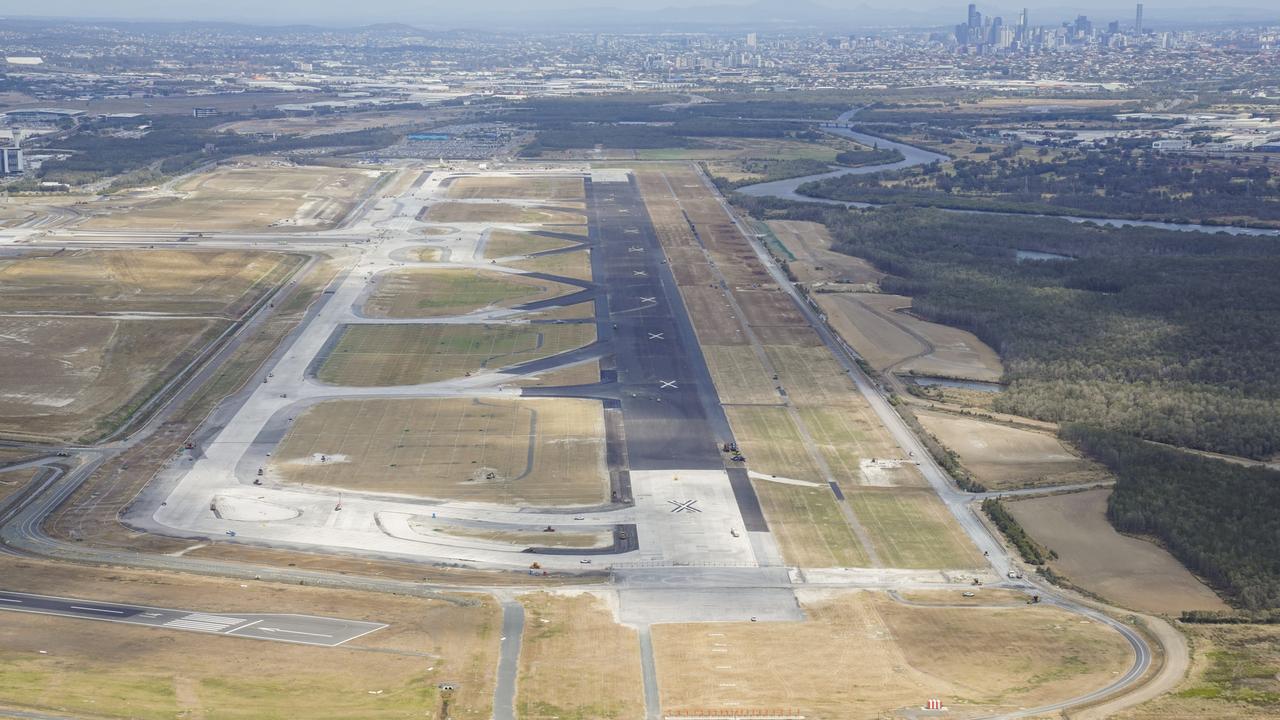Future SEQ: Action plan to make southeast Queensland a model metropolis
CONGESTION-busting transport, world-leading digital infrastructure and hubs for future industries will be key elements of a bid to secure a 20-year deal to make southeast Queensland a model metropolis.
CONGESTION-busting transport, world-leading digital infrastructure and hubs for future industries will be key elements of a bid to secure a 20-year deal to make southeast Queensland a model metropolis.
The State Government and SEQ Council of Mayors are developing a joint proposition for what they hope will be a historic agreement between them and the Federal Government to identify and fund the priorities for the region’s successful growth.
Deputy Premier Jackie Trad said there had been “amazing co-operation” between the state and councils. She and Brisbane Lord Mayor Graham Quirk, who chairs the SEQ Council of Mayors, are lobbying federal Cities Minister Alan Tudge to commit.
“We really want an indication from the Federal Government before the end of the year,” Ms Trad said.
Mr Tudge yesterday said he was prepared to work with other levels of government on a deal, but warned it could take some time.
All parties agreed “infrastructure was the most important element”.
It is understood the main elements of any so-called City Deal proposal will be transport networks, digital connectivity and creating export-oriented knowledge economy jobs.
The push comes as The Courier-Mail today publishes its Future SEQ action plan — a blueprint of practical measures to help guide the region’s development over the next quarter of a century.
The 20-point plan has been compiled from ideas which flowed during the two-week series investigating the challenges and exploring the opportunities ahead as the southeast corner’s population soars from 3.5 million to a forecast 5.5 million by 2043.
Striking a critical agreement between the three levels of government is top of the list — and many other highlighted initiatives are expected to feature in an agreement.
The action plan also includes new and upgraded roads and rail corridors to counter the congestion projected to choke major routes with traffic volumes beyond their capacity.
With almost 800,000 additional homes needed over 25 years, the action plan urges more medium-density development such as townhouses, low-rise apartment blocks and granny flats in the suburbs.
And it promotes the creation of good employment opportunities, education, health and other facilities in new city-sized masterplanned communities in greenfield areas to enable residents to live, work and play close to home.
Technology will transform the workforce and the action plan calls for a clear focus on nurturing those industries where southeast Queensland can become a global leader, such as robotics, advanced manufacturing and agribusiness. Powering up the commercialisation of top-quality scientific and medical research must also be a priority.
And those measures will require world-class, high-speed digital connectivity.
Tourism could enjoy a $20 billion-plus boost if industry leaders refocus overseas marketing efforts on promoting southeast Queensland’s attractions as a package. That will be bolstered by supporting the growth of the region’s four international airports.
Cr Quirk said the Future SEQ series was “really valuable” in engaging the public and providing an opportunity to “stop and think and plan what we need for our future”.
“There needs to be a shared vision to produce the best outcomes. We have enormous potential as a region to improve our economic opportunities while maintaining the great lifestyle we enjoy,” he said.
Leading demographer and social commentator Bernard Salt urged more than 600 business leaders at a sold-out Future SEQ lunch yesterday: “We should not be modest in our ambitions … we should be outrageously ambitious.”
He said a bigger southeast Queensland could be “a more efficient city offering a better quality of life by 2043 than equivalent cities of Melbourne and Sydney today at five million”.
To do so, it would need multiple urban centres.
“This is a different model, a better model that delivers a better quality of life,” he said.
News Corp Australasia executive chairman Michael Miller told the event that next year’s federal election was a chance to put the region’s future on the national radar.
“Southeast Queensland needs infrastructure that will bust congestion, boost liveability and lovability and better connect the region. To achieve that, we need vision matched by outcomes. This is not something we can put off for the next five years,” he said.
“We need it now.”
An SEQ City Deal would be the nation’s biggest yet. But there is concern that any significant delay would not allow enough time for the detail to be worked through before 2020 when a state election and local council elections are due.
International cities expert Professor Greg Clark told The Courier-Mail that southeast Queensland’s flexibility as a multi-city urban area gave it an advantage in how it grew.
“But this region needs to be connected by rapid rail in order to make the most of its potential,” he said.


